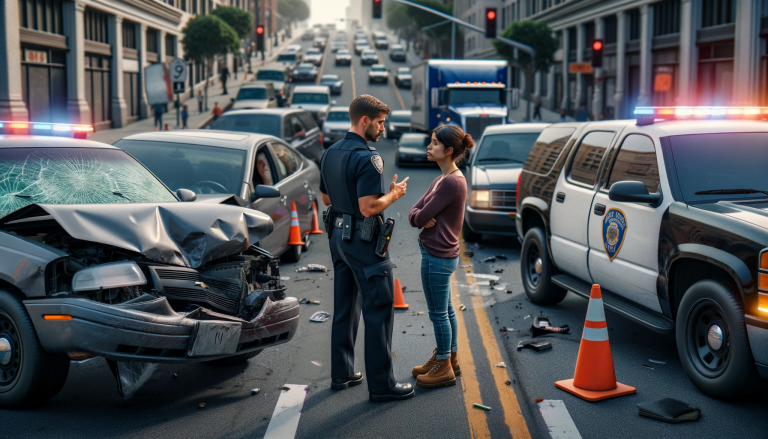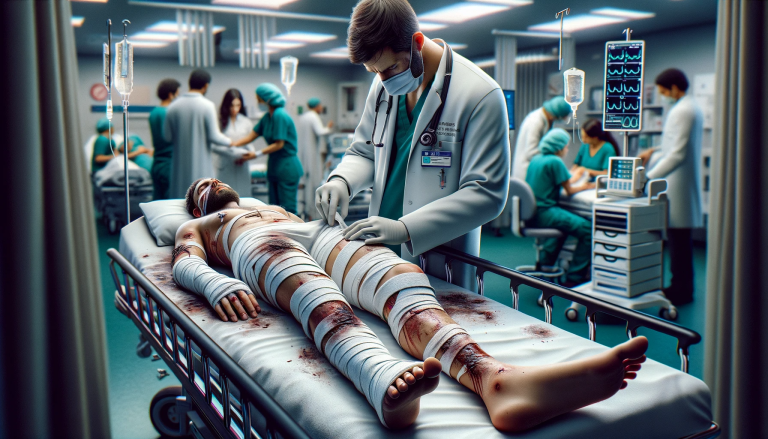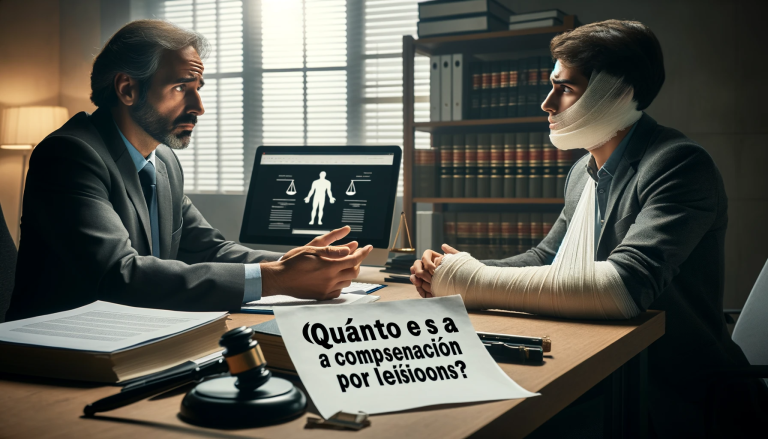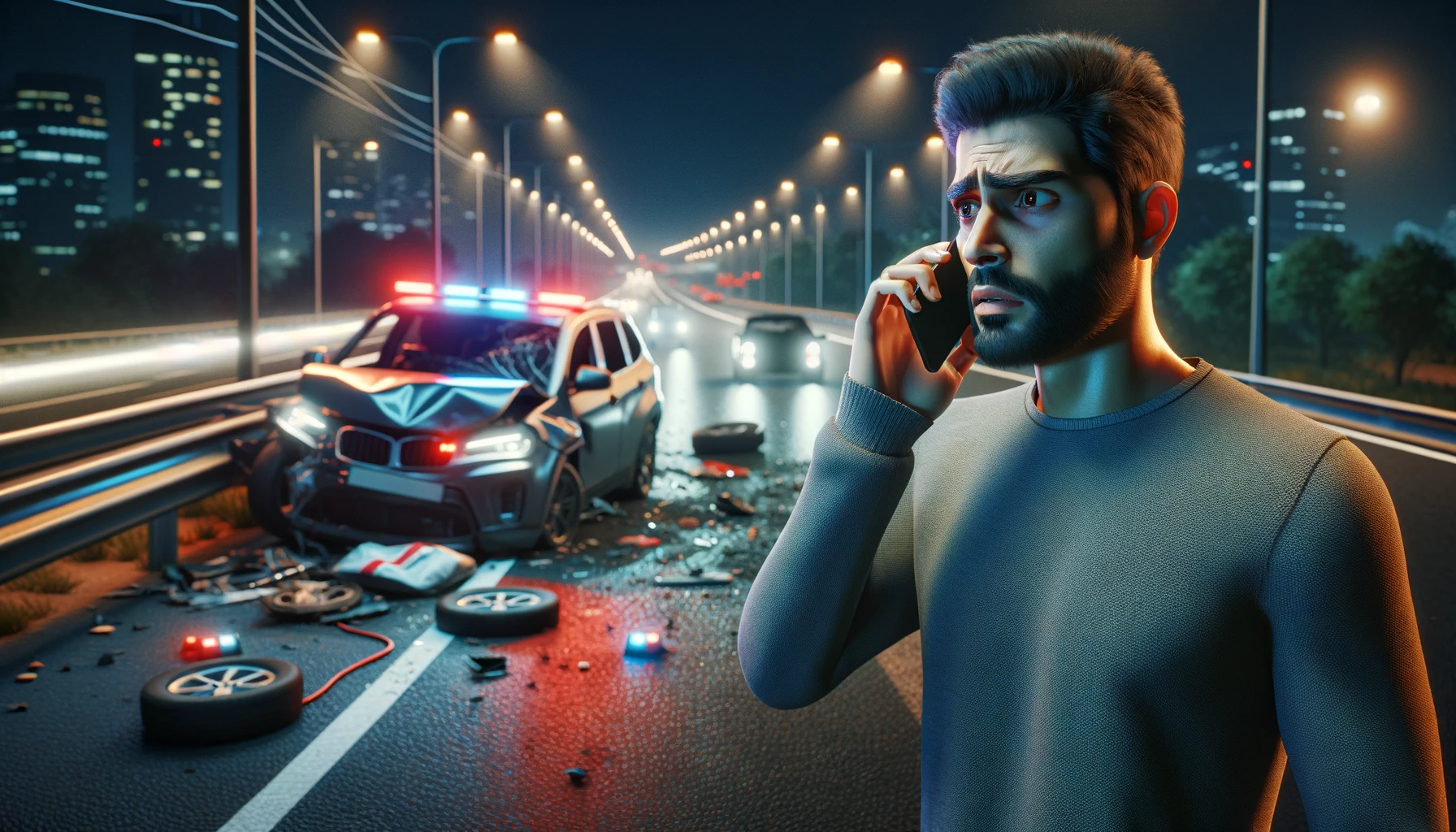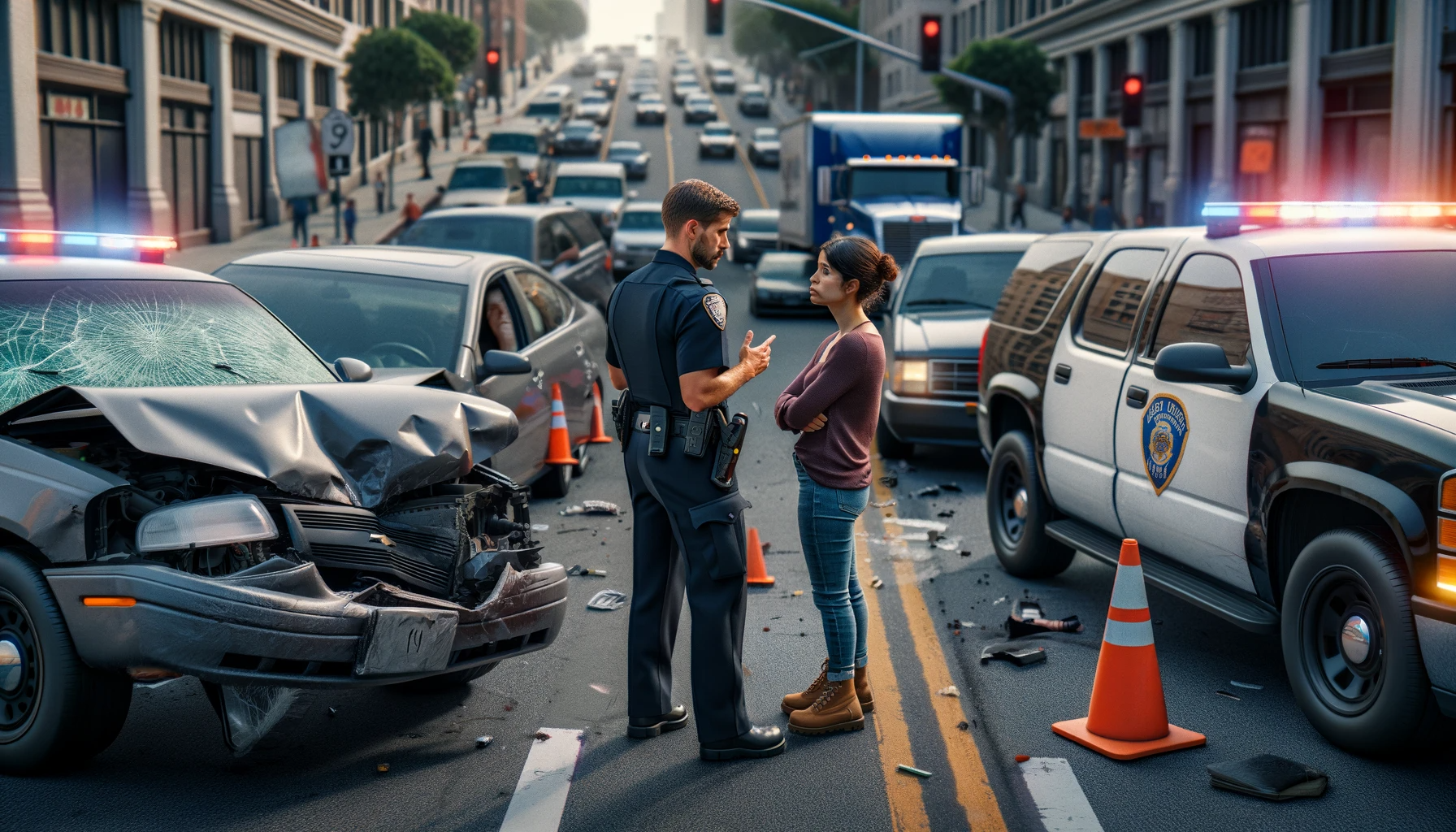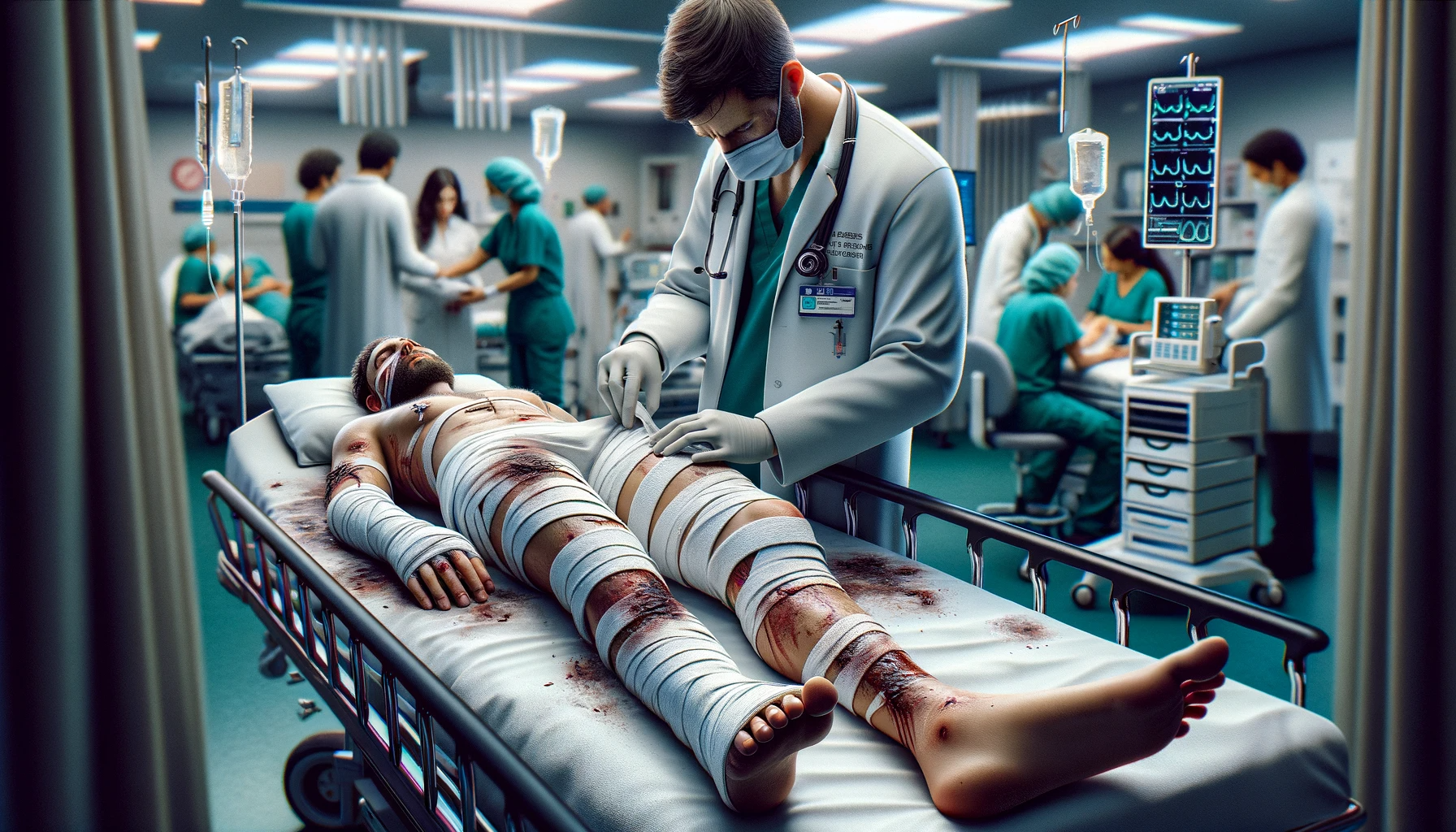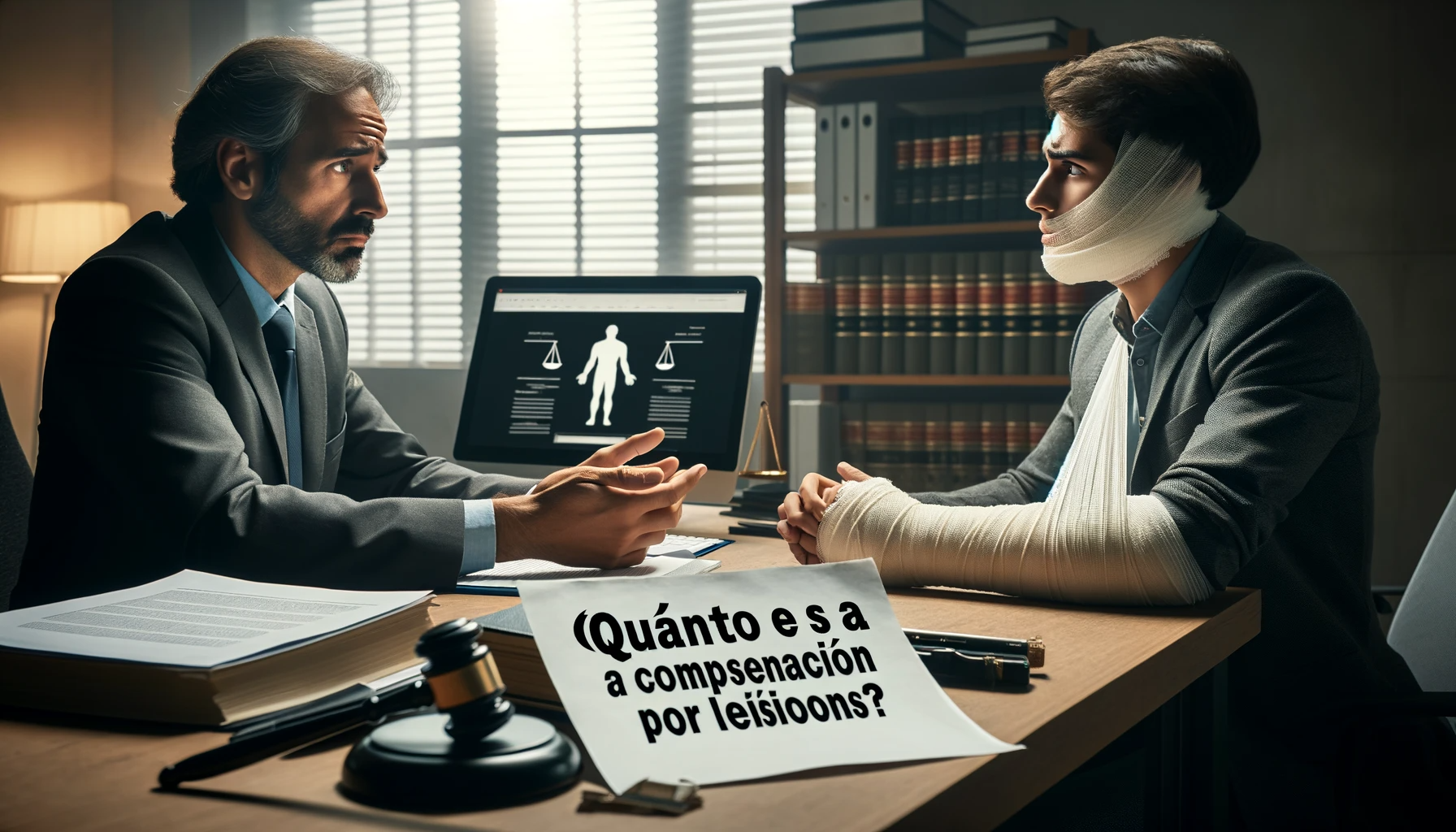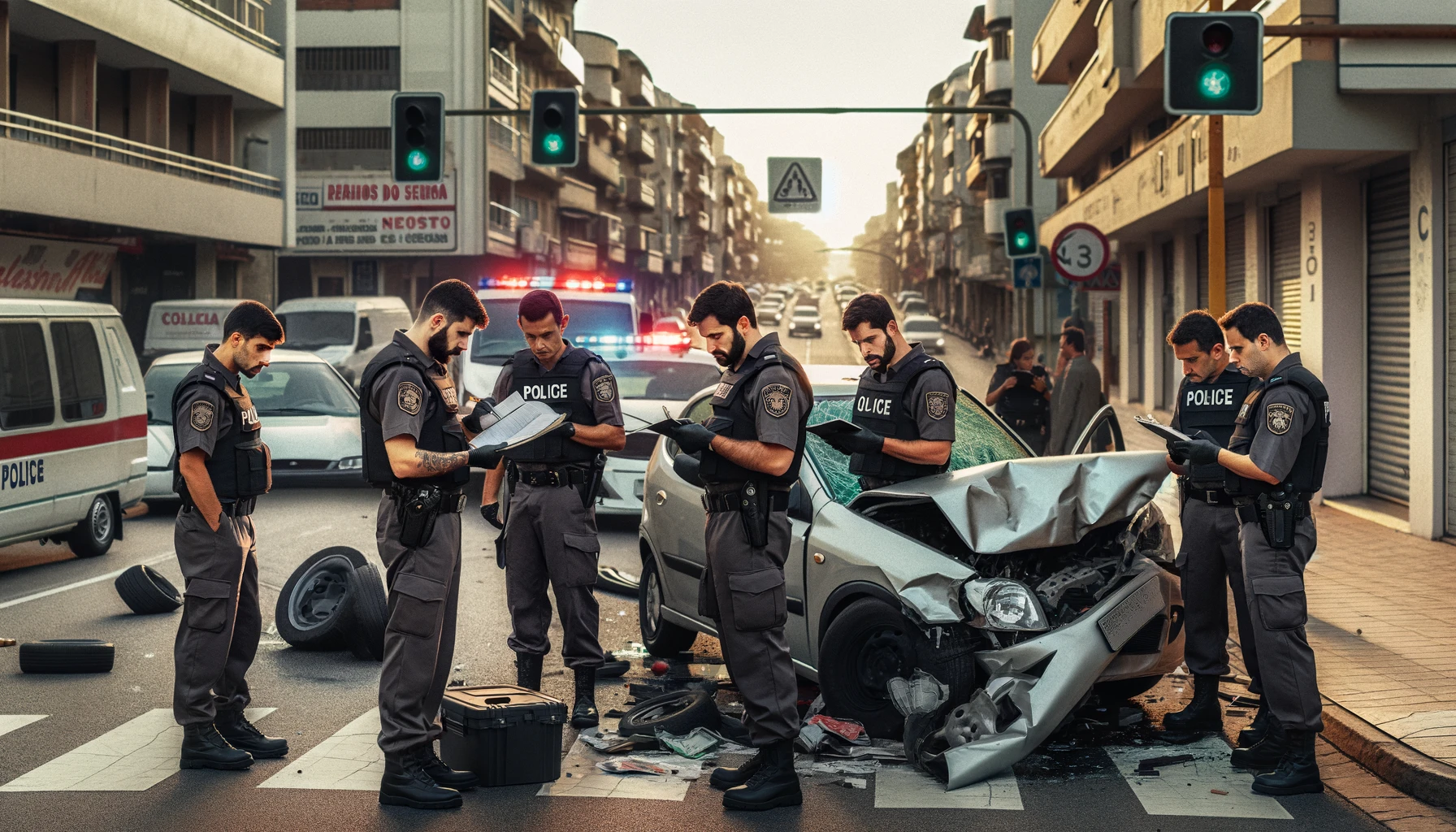Immediate Action and Safety
The immediate arrival and action of a first responder can greatly influence the safety of everyone involved in a traffic
Accident. Proper evaluation of the scene is crucial to minimize additional harm. This involves ensuring that ongoing traffic is controlled, preventing further
Accidents or collisions.
Medical Aid
First response also plays a key role in providing medical aid to the injured as quickly as possible. In cases with severe
Injuries, every second counts, and the immediate treatment provided by a trained first responder can mean the difference between life and death.
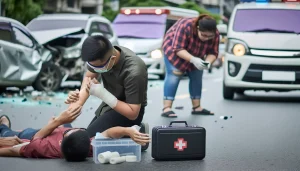
Psychological Support
Accidents often come accompanied by shock, confusion, and fear. First responders administer not only physical first aid but also provide critical psychological support. Reassuring and calming the victims can help prevent the onset of post-traumatic stress disorder and other psychological consequences.
Accident Scene Management
A first responder’s duties also involve the coordination of various other emergency services, such as police, fire, and rescue agencies. Their expertise in managing chaotic
Accident scenes ensures efficient operation and orderly conduct of rescue efforts.
Data Collection and Evidence Preservation
First responders are also instrumental in data collection and evidence preservation at the
Accident scene. Their input can be invaluable in subsequent investigations, helping to construct an accurate picture of what transpired and aiding in assigning responsibility. This information is significant to law enforcement officials, insurance companies, and others involved in the aftermath of the
Accident.
Immediate Steps to Take at the Scene of an Accident
Ensuring Safety
Firstly, if it's safe to do so and you're uninjured, move out of the line of traffic to prevent further accidents. Switch off your vehicle and if necessary, use your hazard lights to alert other road users to the situation. If you have a safety triangle or cones, place them around the scene.
Evaluating Damages and Injuries
Observe the scene carefully. Take note of any damages to vehicles involved, nearby properties, and the overall condition of the accident spot. It's essential to check for injuries too. If anyone is injured, call emergency services immediately. Do not move injured people unless they're in imminent danger - wait for professional assistance.
Contacting Authorities
Always report an
Accident to the police, regardless of the severity. They will come to the scene and document the incident, which can be critical in insurance claims or potential legal proceedings. Provide them with a clear and honest account of what happened.
Gathering Information
Swap contact details and insurance information with the other involved parties. Make note of the make, model and license plate number of all vehicles involved. If there are any eyewitnesses, kindly ask for their contact details - they may be crucial in a future claim or dispute over who was at fault.
Documenting the Scene
Use your mobile phone camera to capture the scene from different angles if it's safe to do so. Photograph your vehicle, other vehicles, their positions, the surrounding area, and any visible
Injuries. Keep track of the date and time of the photos.
Remember, the key focus should always be on ensuring the safety of everyone involved before worrying about the logistics of insurance and blame.
Ensuring Personal Safety: The Top Priority
Assess Personal Risk
In the immediate aftermath of a
Traffic accident, the first consideration should be to evaluate personal danger. Check yourself and any passengers for visible and non-visible injuries. Ensure to move away from the vehicle if it's smoking or if there's a smell of gasoline to avoid possible fire outbreaks.
Seek Immediate Medical Attention
Regardless of the severity of the
Accident, always call for medical assistance. Often, shock or adrenaline can mask pain and injuries, subtly affecting critical functions. Reporting all symptoms to medical professionals, regardless of their apparent triviality, is essential.
Maintain Safe Distance
Once you've evaluated personal injuries, if able, move the vehicle to the side of the road to prevent further
Accidents. If it's not possible to move the vehicle, then everyone should stand at a safe distance away from the road and the vehicle. Use hazard lights, cones or flares to warn oncoming traffic, ensuring your safety until help arrives.
Personal Protective Actions
Some actions can enhance safety in an
Accident scene. For instance, wearing a reflective vest (if available) can increase visibility, decreasing the risk of additional collisions. Also, if necessary, use a window breaker or seatbelt cutter tool for a quick escape.
Contact Authorities
Contacting authorities should always be done promptly. They will secure the area, provide necessary medical attention, document the
Accident scene, and safely direct traffic flow around the crash area.
Notifying Emergency Services: The Critical Call
Understanding When to Alert Emergency Services
It's crucial to grasp the significance of when to communicate with emergency services in the aftermath of a traffic
Accident. At the scene of any collision, it's generally advisable to contact emergency services as quickly as possible, irrespective of the apparent severity. Involving professional help can promptly address
Injuries, prevent further accidents, and provide an official account of the incident.
The Process of Calling 911
When you dial 911, you'll be directed to a local dispatcher who will inquire about the details of the
Accident. It's essential that you remain calm and provide as many specifics as possible, including the number of vehicles involved, injuries experienced, and location of the accident. This step is vital to ensure that appropriate help - police, fire or medical - is dispatched promptly.
Importance of Safety First
While waiting for emergency services to arrive, make sure to prioritize safety. Do not attempt to move those severely injured unless absolutely necessary, as it could potentially cause more harm. Also, if possible, try to steer clear from the flow of traffic and turn on your hazard lights to signal other drivers.
Detailed Documentation for Later Reference
Make sure to take mental or written notes while everything is fresh in your mind. These notes will prove invaluable when later speaking with insurance companies or legal counsel. Args such as the exact time of the accident, road conditions, actions taken post-accident, and descriptions of injuries can all be beneficial.
The Role of Authorities at Accident Scenes
Once authorities arrive, they are in charge of the scenario. They'll ensure everyone's safety, direct traffic, and start documenting the incident in their official report. Your role now shifts to cooperating with them, supplying any necessary information, and following their direction. This interaction also forms part of the official record, which can be crucial in subsequent insurance or legal proceedings.
Documenting the Accident Scene: Key Information Collection
Gathering Details at the Site of the Accident
When documenting an accident scene, ensuring that you note down all essential details is crucial. Start with the fundamental aspects like the date, time, and exact location of the incident. Jot down the street names, nearest landmarks or any prominent signs that can aid in identifying the precise accident spot.
Photographs: Capturing the Incident's Visual Evidence
Always remember that images provide powerful illustrative evidence. Use your phone camera to take as many photos as possible. Capture various angles of the accident scene, damages on the vehicles involved, visible
Injuries, and skid marks, if any. Also, try to photograph the weather condition, street signs, and traffic lights. These can be useful when determining accident liability.
Noting Down Vehicle Information
Be sure to record essential details regarding every vehicle involved in the accident. This should encompass the make, model, color, license plate number, and the year of the vehicles. Moreover, don't forget to jot down insurance information, specifically the company name and policy number.
Witness Details: Essential for Further Investigation
Including witness details can often prove invaluable. If there are people who saw the
Accident happen, request their contact details. Names, addresses, phone numbers, and even email addresses would all be beneficial later in case further clarification is required.
Law Enforcement Officers' Information
When law enforcement officers attend the scene, ensure you write down their names and badge numbers. If they generate a police report of the incident, ask how you can obtain a copy of it. Their impartial report might significantly influence your claim's outcome.
Cooperating with Law Enforcement and First Responders
Understanding the Role of Law Enforcement
Law enforcement officers play a vital role in maintaining safety at the scene of a
Traffic accident. They help manage the flow of traffic, gather information about the incident, and ensure everyone involved is safe. It's crucial to fully cooperate with law enforcement, responding accurately and honestly to their questions.
Assisting First Responders
First responders, such as paramedics and firefighters, are trained professionals who provide immediate assistance during emergencies. You can aid these professionals by clearly stating the facts about the accident and
Injuries sustained. If able, offer help in directing them to injured individuals or areas of concern at the scene.
Maintaining Appropriate Communication
Communication with law enforcement and first responders should be respectful and clear. Avoid speculation or assumption when describing the events leading to the accident. Stick to facts, and remember that any statements you make could later be referenced in legal inferences or insurance claims.
Following Legal Protocols
Cooperating with law enforcement also means adhering to legal protocols and instructions given on the scene. This could range from moving your vehicle to a safe location, to waiting for further instructions. Never leave the scene of an accident before law enforcement gives you clearance to do so.
Providing Accurate, Detailed Information
Finally, it's your responsibility to provide accurate information. This includes personal identification, vehicle registration, and insurance details. Providing detailed and accurate information can expedite investigations, insurance claims processing, and aid in providing fair resolutions for all parties involved.
Next Steps After Leaving the Accident Scene
Inform the Relevant Authorities
After leaving the scene of an accident, it's crucial to report the incident to the police immediately. Even if the accident seems minor, a formal police report could help you make an insurance claim later. Remember to provide all necessary details: date, time, location, other party/parties involved, and a concise account of what took place.
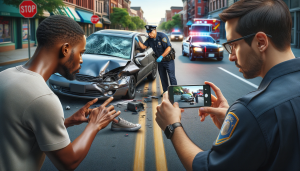
Seek Medical Attention
Regardless of how you feel after the accident, it is essential to visit a healthcare professional for assessment. Sometimes,
Injuries from traffic accidents might not manifest instantly. A thorough medical examination can detect any hidden injuries, ensure your health's overall status, and provide valuable evidence should you pursue a legal or insurance claim.
Gather All Necessary Documentation
Collect all essential documentation related to the accident for future references. This includes the police report, medical reports, insurance documents, photos from the accident scene, and any other relevant paperwork. Organize them carefully since you might need to present these documents to your insurance company or attorney.
Contact Your Insurance Provider
As soon as possible after the
Accident, get in touch with your auto insurance provider to start the claims process. Ensure you provide them with accurate information about the incident. Be honest about the facts of the accident, who was involved, and the extent of the damages. Keep track of the claim progress and maintain a record of all conversations and correspondences with your insurer.
Consult With a Legal Expert
If the accident involved significant damage,
Personal injury, or if there's a dispute over who was at fault, seeking legal advice is necessary. An experienced lawyer can guide you through the legal process, ensuring that your rights are protected and helping you obtain any compensation you may be entitled to.
Conclusion
In the event of a traffic accident, prioritizing safety is paramount. Ensuring that you and others involved are safe should be the first step. Once safety is established, it's important to protect the accident scene to prevent further incidents and seek assistance promptly to address any
Injuries or damage.
Look for an attorney who has the right legal resources for your legal needs.
Contact us here on the
Warmuth Law website or through our hotline 888-517-9888.
Frequently Asked Questions (FAQ's)
1. What is the first thing I should do after a Traffic accident?
After a traffic accident, the first thing you should do is check if you or anyone else involved is injured. If there are
Injuries, call emergency services immediately. Even if there are no injuries, it's still important to contact the police to report the accident.
2. Should I move my vehicle after a traffic accident?
If your vehicle is causing a hazard or obstructing traffic, it may be necessary to move it to a safe location. However, if it's safe to do so, it's generally best to leave the vehicles where they are until the police arrive to document the scene.
3. What information should I exchange with other drivers after a Traffic accident?
After a traffic accident, you should exchange contact information such as names, addresses, phone numbers, and insurance information with the other drivers involved. You should also note the make, model, and license plate number of the other vehicles involved.
4. Should I take photos of the accident scene?
Taking photos of the accident scene can be very helpful for insurance purposes and to document the damage. Be sure to take photos of the vehicles involved, any visible injuries, and any relevant road or weather conditions.
If you sustain injuries in a traffic accident, seek medical attention immediately, even if the injuries seem minor. After receiving medical treatment, be sure to follow up with your insurance company to report the accident and file a claim. It's also a good idea to consult with a
Personal injury attorney to understand your rights and options.




